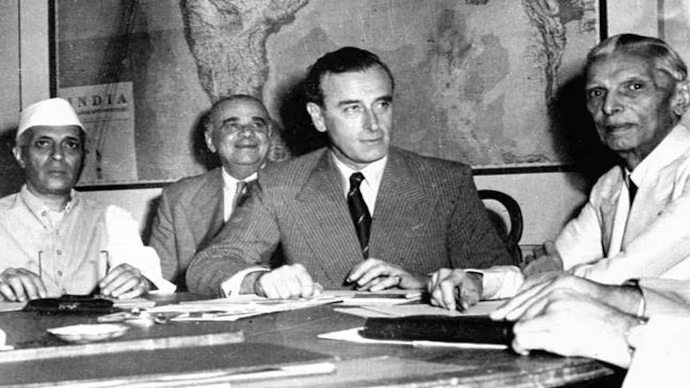On July 5, 1947, the British Parliament passed the Indian Independence Act, marking a decisive end to nearly two centuries of colonial rule in India. Just over a month later, on August 15, 1947, the Act came into force, officially dividing British India into two sovereign dominions—India and Pakistan. This landmark legislation forever reshaped the political, social, and cultural landscape of South Asia.
What Did the Act Entail?
The Indian Independence Act was drafted under the Labour government led by Prime Minister Clement Attlee and was based on the Mountbatten Plan, proposed by Lord Louis Mountbatten, the last British Viceroy of India.
It was a response to the growing demands for independence, intensified after World War II, and to manage rising communal tensions between Hindus and Muslims. At the heart of the Act was the partition of British India into two nations, India and Pakistan. While India became a secular state led by Jawaharlal Nehru, who became the first Prime Minister, Pakistan, on the other hand, became a newly created nation for Muslims, with Muhammad Ali Jinnah as Governor-General and Liaquat Ali Khan as Prime Minister.
Pakistan comprised two separate regions—West Pakistan (modern-day Pakistan) and East Pakistan, which later became Bangladesh after the 1971 War of Liberation led by Mujibur Rahman, the father of the exiled former Prime Minister Sheikh Hasina.
The provinces of Punjab and Bengal were split between the two nations, creating borders along communal lines. This led to the largest forced migration in recorded history outside of war or famine, triggering horrific communal violence and lasting intergenerational trauma.
What Was There in The Act?
The Indian Independence Act was more than just a declaration of independence. It was a legal framework for the orderly dismantling of British control and the establishment of self-governance.
Here are seven key provisions:
1. Partition of India
British India was divided into two dominions—India and Pakistan—with Punjab and Bengal partitioned between them based on religious demographics.
2. Creation of Two Sovereign Nations
India and Pakistan were declared fully independent and sovereign, ending British authority over both.
3. Abolition of British Suzerainty
The Act ended British suzerainty over more than 560 princely states, freeing them from prior obligations to the Crown.
4. Option for Princely States
These states could join India or Pakistan, or theoretically remain independent. Most acceded to India; a few joined Pakistan.
5. End of the Title ‘Emperor of India’
The British monarch relinquished the title, symbolizing the complete end of colonial rule.
6. Independent Lawmaking Powers
India and Pakistan were granted sovereign legislative authority, and British laws no longer applied by default.
7. Transitional Governance
Until new constitutions were adopted, both countries would function under modified provisions of the Government of India Act, 1935.
How the Act Was Implemented & Its Impact on India?
At midnight on August 14–15, 1947, independence was formally granted. Ceremonies in Karachi and New Delhi marked the birth of Pakistan and India, respectively. Leaders like Nehru and Jinnah delivered historic speeches as they took the reins of their new nations.
However, the partition also unleashed a catastrophic humanitarian crisis where 15 million people were uprooted, communal riots took place, leading to the loss of thousands of lives, and massive violence was reported in the border regions, especially Punjab and Bengal. The consequences of partition deeply scarred the Indian subcontinent, giving rise to decades of mistrust and conflict between India and Pakistan.
While Pakistan declared itself an Islamic republic in 1956, India remained secular, owing to the visions of leaders like Nehru, Patel, Ambedkar, and Gandhi, who resisted the idea of a theocratic state despite the Hindu majority. Historians widely agree that the communal divide, especially the idea of “two nations,” was a colonial legacy, largely shaped by British policies that fostered division, exemplified in the rise of the Muslim League and its demand for Pakistan.
The Act’s Legacy
The Indian Independence Act was repealed with the adoption of the new constitution. India’s Constitution came into effect on January 26, 1950, making it a sovereign republic. Six years after India, Pakistan too adopted its constitution in 1956, though it would see numerous amendments and political upheavals thereafter.
The Act remains a crucial moment in the history of South Asia—it gave birth to two nations, set the stage for modern governance in the region, and left behind a complex legacy that continues to shape Indo-Pak relations to this day.

















Comments